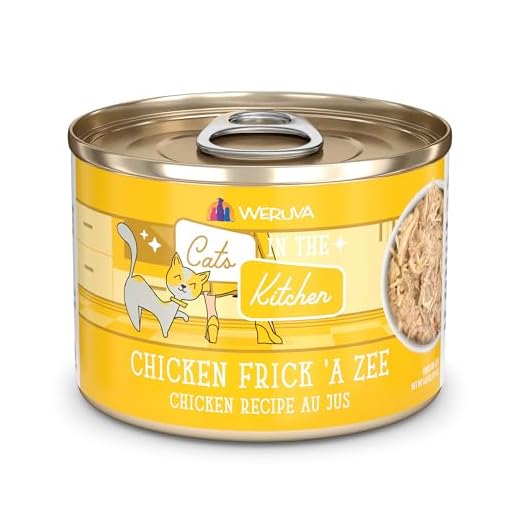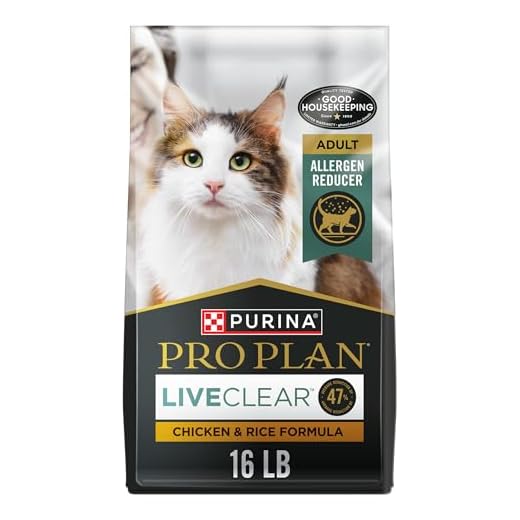



Absolutely! A well-prepared piece of poultry can be a delightful treat for me. It’s important, however, to ensure that it’s plain, without any seasoning, sauces, or additives that could upset my tummy.
When serving this delectable morsel, make sure it’s cut into small, manageable bites. This helps prevent choking and allows for easier chewing. Always check that it’s properly cooked to avoid any potential health risks, as undercooked meat can harbor harmful bacteria.
While I thoroughly enjoy this tasty option, it shouldn’t make up my entire diet. A balanced meal plan, rich in essential nutrients, is key to my health and well-being. Treats like this should complement my regular food, not replace it!
Is It Safe for Me to Enjoy Cooked Poultry?
Yes, enjoying well-prepared poultry is safe for me. It provides a great source of protein, which is essential for my health and muscle development. However, it must be plain, without any seasoning, spices, or sauces that could upset my tummy.
Preparation Tips
Always ensure the meat is fully cooked to avoid any harmful bacteria. Remove any skin and bones before serving, as they can pose choking hazards or cause digestive issues. Shredded pieces are easier for me to handle and enjoy.
Portion Control
Moderation is key. Treats should not exceed 10% of my daily food intake. This helps maintain a balanced diet and prevents any unwanted weight gain. Always consult with a veterinarian if unsure about dietary changes.
Understanding Nutritional Needs of Felines
Protein plays a significant role in maintaining health. High-quality animal proteins support muscle development and overall vitality. Aim for a diet that consists of at least 30-40% protein derived from meat sources.
Key Nutrients for Optimal Health
- Amino Acids: Tryptophan, taurine, and arginine are crucial. They aid in heart function, vision, and digestion.
- Fats: Healthy fats, like omega-3 and omega-6, contribute to skin and coat health. Ensure a balanced intake for energy and cell functions.
- Vitamins: B vitamins, vitamin A, and vitamin E are necessary for metabolic processes and immune support.
- Minerals: Calcium, phosphorus, and potassium support bone health and various bodily functions.
Hydration Matters
Fresh water must always be accessible. Many prefer wet food as it contributes to hydration. Monitor water intake, especially in dry diets, to prevent urinary issues.
Understanding these nutritional elements ensures a well-rounded diet, promoting longevity and wellness. Always consult a veterinarian for specific dietary adjustments tailored to individual needs.
Safety Precautions When Feeding Cooked Chicken
Always ensure that the meat is boneless. Sharp bones can cause serious harm to the digestive tract. Remove any skin, as it may lead to gastrointestinal discomfort.
It’s best to avoid seasoning or adding any sauces. Ingredients like garlic and onion are toxic and can lead to health issues. Plain, unseasoned meat is the safest option.
Temperature Check
Before serving, make sure the meat is at a safe temperature. Cooling it to room temperature helps prevent burns and digestive upset.
Portion Control
Moderation is key. Small amounts are sufficient to avoid an upset stomach. Overindulgence can lead to complications like obesity or pancreatitis.
Consulting a veterinarian can provide tailored advice for dietary choices, ensuring the best health and happiness for your furry friends.
How to Prepare Chicken for Your Cat
Start with boneless, skinless poultry to eliminate choking hazards and unhealthy fats. Here are steps to follow:
- Choose fresh, high-quality meat from a reliable source.
- Thoroughly wash your hands and all surfaces to avoid cross-contamination.
- Cook the fillets by boiling or baking without seasoning. Avoid using oils, salt, or spices.
- Ensure the meat is fully cooked, reaching an internal temperature of at least 165°F (75°C).
- Let the meat cool down completely before serving.
- Cut the protein into small, manageable pieces to make it easier for your furry friend to eat.
Store any leftovers in an airtight container in the refrigerator, and use them within 3-4 days. Always check for freshness before serving again.
Introduce this meal gradually to monitor for any adverse reactions. If any discomfort arises, consult a veterinarian.
Portion Sizes for Cats: How Much Chicken is Safe?
For a feline like me, the ideal portion of poultry is around 1 to 2 ounces per serving. This amount ensures a balanced intake without overwhelming my digestive system. It’s best to limit this tasty treat to a few times a week to maintain a proper diet.
When serving, consider my size and activity level. A small, less active companion may require smaller portions compared to a larger, more energetic friend. Always adjust the quantity based on individual needs and overall health.
Monitor reactions after introducing any new food. If any signs of discomfort occur, reevaluate the portion size or frequency. Hydration is also key; ensure fresh water is always available alongside any meaty morsels offered.
Remember, moderation is the secret to enjoying such delights without compromising well-being. Keep track of overall diet to avoid nutritional imbalances.
Signs of Allergies or Intolerance in Felines
Be aware of specific symptoms indicating food sensitivities in your furry friend. If your companion exhibits any of the following, it may be time to rethink their diet:
| Symptom | Description |
|---|---|
| Itchy Skin | Persistent scratching or biting at the skin may signal an allergic reaction. |
| Gastrointestinal Distress | Vomiting or diarrhea often points to intolerance; consider monitoring their reactions closely. |
| Ear Infections | Recurring ear issues can indicate allergies related to food. |
| Respiratory Issues | Signs like sneezing or coughing might suggest an allergic response. |
| Behavior Changes | Increased irritability or lethargy can be linked to discomfort from allergies. |
If you notice any of these issues, consult a veterinarian. They can help identify the problem and suggest the best food for cats with gastrointestinal problems. Adjusting diets is crucial for maintaining optimal health and happiness.
Alternatives to Cooked Chicken for a Balanced Diet
For a varied diet, consider incorporating turkey or duck as excellent substitutes. These meats provide high protein and essential nutrients, much like poultry. Fish, such as salmon or tuna, offers omega-3 fatty acids, which promote healthy skin and coat.
Lean beef is another option, rich in iron and vitamins. Just be sure to serve it without any seasoning or sauces, as they can be harmful.
Vegetables like pumpkin or peas can be mixed in small amounts for added fiber and vitamins. They not only contribute to digestive health but also keep meals interesting.
Commercially available cat food often includes a balanced mix of proteins, fats, and carbohydrates. Make sure to choose high-quality brands that list meat as the first ingredient.
Consult with a veterinarian for tailored advice on specific dietary needs. They can recommend the best food options suitable for your furry friend.
For those looking for reliable equipment, check out the best small air compressor for filling car tires for maintaining your vehicle, ensuring safe travels to the vet or pet store.
FAQ:
Is it safe to give my cat cooked chicken?
Yes, it is generally safe to give your cat cooked chicken. Many cats enjoy the taste of chicken, and it can be a good source of protein. However, make sure that the chicken is thoroughly cooked, without any seasoning, sauces, or bones, as these can be harmful to your cat.
What preparation methods are best for cooking chicken for my cat?
The best methods for preparing chicken for your cat are boiling or baking it without any added spices or oils. To prepare, simply boil the chicken until fully cooked or bake it in the oven. After cooking, let it cool and shred it into small, manageable pieces for your cat. Always ensure there are no bones, as they can splinter and cause choking or injury.
Can I feed my cat chicken every day?
While cooked chicken can be a healthy treat for your cat, it should not be the sole component of their diet. Cats require a balanced diet that includes a variety of nutrients. You can offer chicken as an occasional treat, but make sure it complements their regular cat food, which is formulated to meet all their dietary needs.
What should I do if my cat has an allergic reaction to chicken?
If you suspect that your cat is having an allergic reaction to chicken, look for symptoms such as vomiting, diarrhea, or skin irritations. In such cases, stop feeding them chicken immediately and consult your veterinarian. They can help determine if your cat has a food allergy and recommend suitable alternatives for their diet.
Are there any benefits to giving my cat cooked chicken?
Yes, there are several benefits to giving your cat cooked chicken. It is a source of high-quality protein, which is important for muscle maintenance and overall health. Additionally, the moisture content in cooked chicken can help with hydration, especially if your cat doesn’t drink enough water. However, it should be offered in moderation and as part of a balanced diet.










